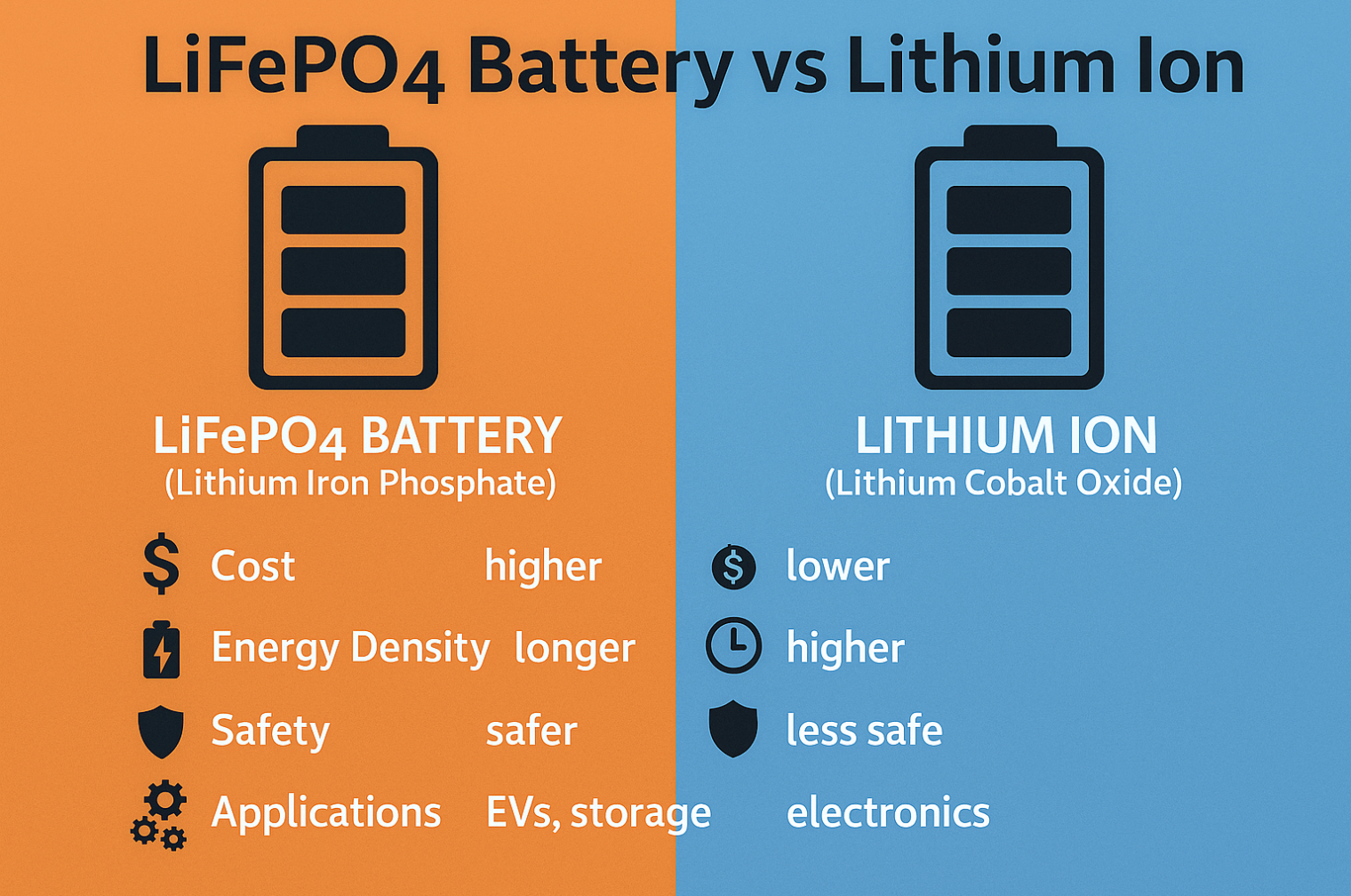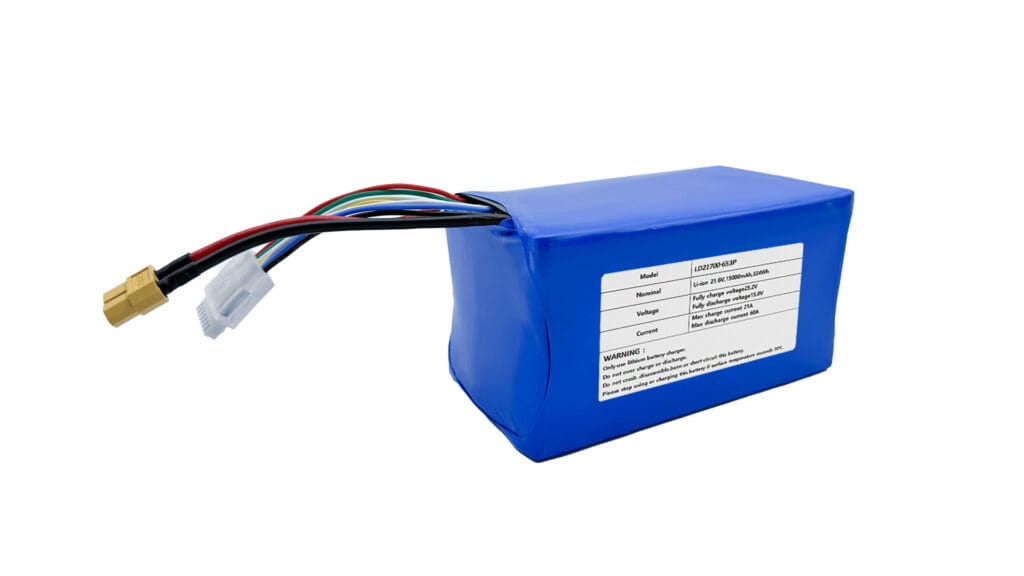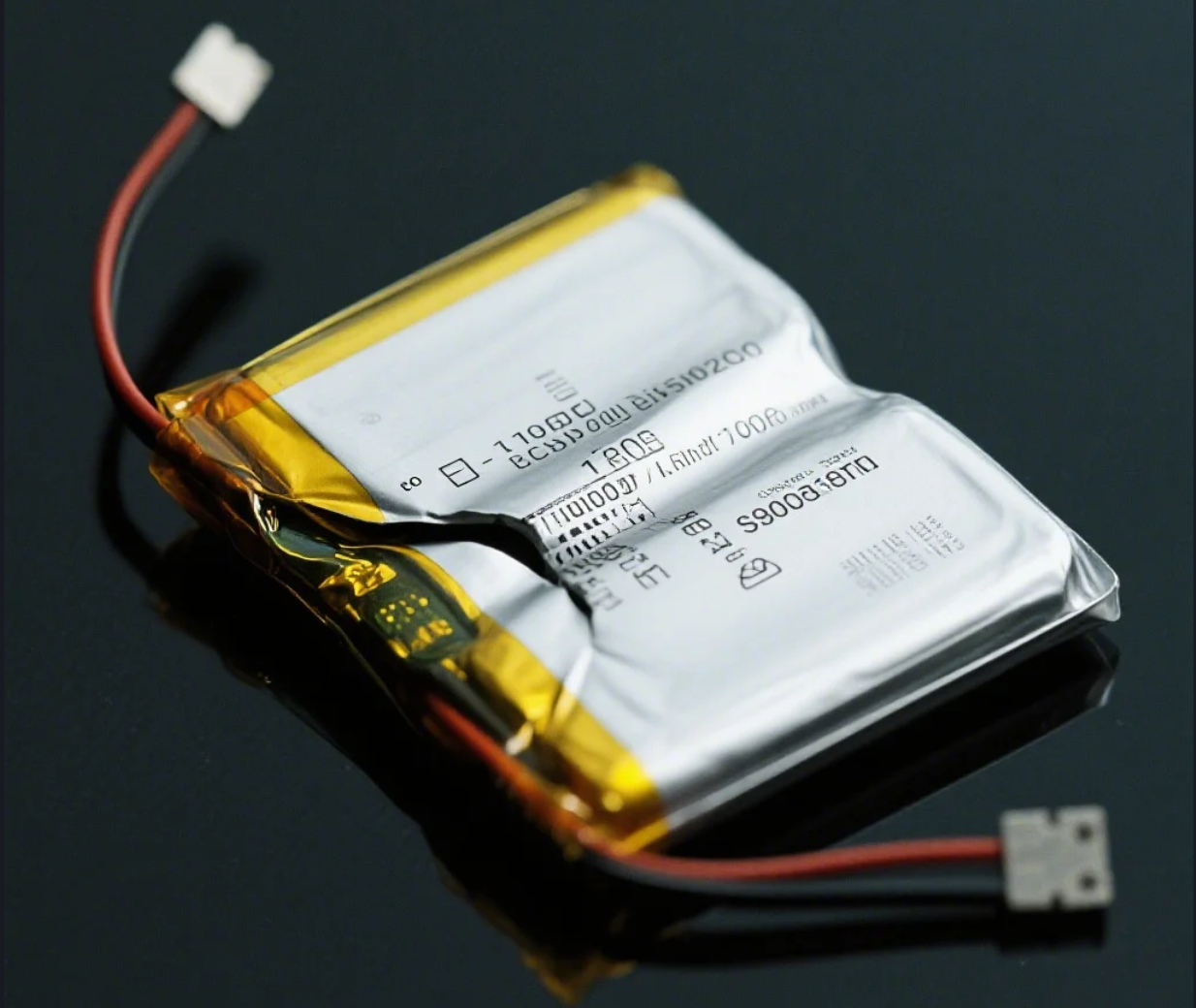In a world increasingly powered by electricity, batteries are the unsung heroes, silently fueling everything from our smartphones to electric vehicles and entire homes. While Lithium-Ionen-Batterien have dominated the portable electronics and burgeoning electric vehicle (EV) markets for years, a powerful contender has steadily risen through the ranks: the LiFePO4-Akku, or Lithium Iron Phosphate.
Often, “lithium-ion” is used as a catch-all term, but the reality is more nuanced. The world of rechargeable batteries is evolving rapidly, and understanding the distinct chemistries and their applications is crucial for making informed choices. This comprehensive guide will dive deep into the LiFePO4 battery vs Lithium Ion debate, comparing their core characteristics, advantages, disadvantages, and ideal uses to help you choose the right power source for your needs.
The Lithium-Ion Family: A Diverse Powerhouse
Before we pit one against the other, let’s clarify what we mean by “lithium-ion battery.” It’s actually a broad category of rechargeable batteries where lithium ions move between the anode and cathode during charge and discharge. What truly defines their performance are the specific materials used in their cathodes.
What is a Lithium-Ion Battery?
In seinem Kern ist ein lithium-ion battery works by using lithium ions to move back and forth between a positive electrode (cathode) and a negative electrode (anode) through an electrolyte. This movement creates an electric current. The magic, and the variations, happen in the chemical composition of these electrodes, particularly the cathode.
Common Lithium-Ion Chemistries (NMC, NCA, LCO)
When people refer to “lithium-ion” in general, they’re often thinking of chemistries like:
- NMC (Nickel Manganese Cobalt): These batteries are renowned for their hohe Energiedichte, meaning they can store a lot of energy in a relatively small and light package. This makes them ideal for applications requiring long range or extended runtime, like most Elektrofahrzeuge, laptops, and high-end power tools.
- NCA (Nickel Cobalt Aluminum): Similar to NMC, NCA batteries also offer very hohe Energiedichte und power density. They are often found in performance-focused applications, notably in some Tesla electric vehicles.
- LCO (Lithium Cobalt Oxide): This was one of the earliest and most common lithium-ion chemistries, widely used in consumer electronics like smartphones and older laptops due to its high volumetric energy density.
Pros and Cons (General Li-Ion)
Vorteile:
- Hohe Energiedichte: Allows for smaller, lighter battery packs, crucial for portable devices and extending EV range.
- Hohe Leistungsabgabe: Can deliver significant bursts of power when needed.
- Established Market: Widely available and extensively used across various industries.
Nachteile:
- Sicherheitsprobleme: Susceptible to thermisches Durchgehen if damaged, overcharged, or subjected to extreme temperatures, which can lead to fires.
- Shorter Cycle Life: Typically offer fewer charge-discharge cycles compared to LiFePO4 before significant capacity degradation.
- Kosten: Often higher initial cost, especially for high-capacity packs.
- Environmental Impact: Production, particularly the reliance on cobalt, raises ethical and environmental concerns.
Introducing LiFePO4 Batteries
Stepping into the ring is the LiFePO4-Akku, or Lithium Iron Phosphate. While it’s technically a type of lithium-ion battery, its unique cathode material sets it apart so significantly that it’s often discussed as a separate category.
What is a LiFePO4 Battery?
Unlike NMC or NCA, the cathode of a LiFePO4-Akku is made from lithium iron phosphate (LiFePO4). This specific chemical structure, often referred to as an “olivine” structure, provides exceptional stability and significantly differentiates its performance characteristics from other lithium-ion variants. A key differentiator is its cobalt-free composition.
Key Characteristics of LiFePO4
LiFePO4 batteries are celebrated for characteristics that prioritize durability and safety:
- Exceptional Safety: Their inherent chemical stability makes them highly resistant to thermal runaway, greatly reducing the risk of fire or explosion.
- Lange Zyklusdauer: They can endure thousands of charge and discharge cycles with minimal degradation, often outlasting other battery types by a wide margin.
- Stabiler Spannungsausgang: They maintain a very consistent voltage throughout most of their discharge cycle, ensuring consistent power delivery.
- Wide Operating Temperature Range: They perform reliably across a broader range of temperatures compared to other lithium-ion chemistries.
- Environmentally Friendlier: The absence of cobalt and relatively abundant iron makes them a more sustainable choice.
Pros and Cons (LiFePO4)
Vorteile:
- Überlegene Sicherheit: The biggest advantage, virtually eliminating thermal runaway risk.
- Very Long Cycle Life: Offers significantly more charge cycles, leading to a longer overall lifespan and lower total cost of ownership (TCO).
- Excellent Durability: Robust and tolerant to a wider range of operating conditions.
- Stable Discharge Voltage: Provides consistent power until nearly empty.
- Environmentally Friendlier: No cobalt, easier to recycle.
Nachteile:
- Lower Energy Density: They are typically larger and heavier than NMC/NCA batteries for the same energy capacity, which can be a drawback in space-constrained applications like compact EVs or smartphones.
- Slightly Lower Nominal Voltage: A minor point, but they operate at a slightly lower voltage per cell (typically 3.2V vs. 3.6-3.7V for NMC/NCA).
- Initial Cost (per Wh): While improving, the initial cost per watt-hour can still be marginally higher than some NMC types, though this is offset by their long lifespan.
LIFePO4 Battery vs Lithium Ion
Now that we understand the basics, let’s put LiFePO4 vs. Lithium-Ion head-to-head across the most critical performance metrics.
Energy Density vs. Power Density
- Die Energiedichte: This refers to how much energy a battery can store relative to its weight (gravimetric energy density, measured in Wh/kg) or volume (volumetric energy density, measured in Wh/L).
- Lithium-Ion (NMC/NCA): Generally excels here, with typical energy densities ranging from 150-250 Wh/kg. This high density is why they are favored in applications where space and weight are at a premium, such as smartphones, laptops, and long-range electric vehicles.
- LiFePO4: Has a lower energy density, typically in the range of 90-140 Wh/kg. This means a LiFePO4 battery will be physically larger and heavier than an NMC/NCA battery of the same capacity.
- Leistungsdichte: This describes how quickly a battery can deliver energy.
- Both chemistries can offer good power density, but LiFePO4 often has an edge in power output stability over its discharge cycle, making it excellent for applications needing consistent current.
Safety and Thermal Stability
This is perhaps the most significant differentiator.
- Lithium-Ion (NMC/NCA): These chemistries are more prone to thermisches Durchgehen, a dangerous chain reaction where internal heat causes further decomposition, potentially leading to venting, smoke, and fire. This risk is amplified by overcharging, physical damage, or high temperatures. While Battery Management Systems (BMS) mitigate this, the inherent chemistry carries a higher risk profile.
- LiFePO4: Offers superior safety due to its incredibly stable chemical structure. The iron-phosphate bond is robust and less prone to breaking down under stress or heat. This makes LiFePO4 batteries virtually immune to thermal runaway, significantly reducing fire risk, even if punctured or severely overcharged. This inherent stability is why they are often chosen for applications where safety is paramount, such as in confined spaces like RVs or homes.
Lifespan and Cycle Life
Lebensdauer des Zyklus refers to the number of charge and discharge cycles a battery can undergo before its capacity significantly degrades (typically to 80% of its original capacity).
- Lithium-Ion (NMC/NCA): Typical cycle life ranges from 500 to 2,000 cycles, depending on the specific chemistry, depth of discharge (DoD), and operating conditions. For many consumer electronics that are replaced every few years, this is often sufficient.
- LiFePO4: Boasts an exceptionally long cycle life, often ranging from 2,500 to 10,000+ cycles with proper care and a good BMS. Some high-quality LiFePO4 cells are rated for even more cycles. This longevity translates directly into a longer overall battery lifespan, making them a highly durable and long-term investment, especially for applications involving daily cycling.
Cost (Initial vs. Long-Term)
- Initial Cost: Historically, LiFePO4 batteries had a higher upfront cost per watt-hour compared to some NMC variants. However, manufacturing advancements and increased demand have significantly driven down LiFePO4 prices. Today, the initial cost gap has narrowed considerably, and in some cases, LiFePO4 can be comparable or even cheaper than NMC for equivalent capacity.
- Long-Term Cost (Total Cost of Ownership – TCO): Dies ist der Ort, an dem LiFePO4 truly shines. Due to its vastly superior cycle life, the cost per cycle of a LiFePO4 battery is dramatically lower. For applications with frequent cycling, such as home energy storage oder off-grid solar systems, a LiFePO4 battery might cost more initially but will pay for itself many times over its lifespan, while other lithium-ion types would need multiple replacements. This makes LiFePO4 far more cost-effective in the long run.
Performance and Voltage Stability
- Lithium-Ion (NMC/NCA): These batteries typically have a higher nominal voltage per cell (around 3.6-3.7V). However, their voltage tends to drop more steeply as they discharge, particularly under heavy load. This can lead to a less consistent power output if not managed by advanced electronics.
- LiFePO4: Characterized by a very flat discharge curve. This means the battery maintains a remarkably consistent voltage (typically around 3.2V per cell) throughout most of its discharge cycle, until it’s almost completely depleted. This voltage stability is critical for sensitive electronics and applications requiring unwavering power delivery.
Environmental Impact & Sustainability
- Lithium-Ion (NMC/NCA): The reliance on cobalt is a significant environmental and ethical concern. Cobalt mining can lead to habitat destruction, pollution, and questionable labor practices in some regions. While efforts are underway to reduce cobalt content or source it responsibly, it remains a challenge.
- LiFePO4: Offers a more sustainable profile. It is entirely cobalt-free, replacing it with abundant and less problematic iron. Both LiFePO4 and other lithium-ion batteries are recyclable, but the absence of cobalt in LFP simplifies the recycling process and reduces its overall environmental footprint.
Choosing Your Power: Applications Where Each Battery Excels
Understanding the differences between LiFePO4 and other lithium-ion chemistries helps us see why one might be preferred over the other for specific uses.
Elektrofahrzeuge (EVs)
- Lithium-Ion (NMC/NCA): Historically dominant in EVs due to their hohe Energiedichte, which directly translates to longer driving range. Most long-range electric cars, like many premium Tesla models or European EVs, still rely on NMC or NCA for maximum miles per charge.
- LiFePO4: Gaining significant traction in the EV market, especially for standard-range and urban vehicles. Automakers like Tesla are increasingly incorporating LiFePO4 batteries into their standard-range Model 3 and Model Y vehicles due to their lower cost, superior safety, und längere Lebenserwartung. Chinese manufacturers, particularly BYD, are also massive proponents of LFP, utilizing their “Blade Battery” technology (which is LiFePO4) in a wide array of EVs and buses. While LFP-powered EVs may have slightly shorter ranges than their NMC counterparts, their safety, durability, and cost benefits are highly appealing for urban commuting and fleet vehicles.
Residential & Commercial Energy Storage (Solar Batteries)
- LiFePO4: Dies ist der Ort, an dem LiFePO4 batteries are truly the gold standard. For home energy storage systems, backup power, and off-grid solar installations, their unparalleled safety, extraordinary cycle life, und long-term cost-effectiveness make them the clear winner. Daily cycling is common in these applications, so a battery that can handle thousands of cycles over 10-15+ years is paramount. Brands like Enphase, Generac, and numerous others predominantly use LiFePO4 for their residential battery solutions.
- Lithium-Ion (NMC/NCA): Less common for stationary storage due to their higher fire risk in a home environment and shorter cycle life, which would mean more frequent and costly replacements for a system designed to last decades.
Portable Power & RV/Marine
- LiFePO4: An excellent choice for tragbare Kraftwerke, RV batteries, und marine batteries. Their robust nature, ability to withstand vibrations, consistent power output, and exceptional safety in enclosed spaces (like an RV compartment or boat bilge) are highly valued. The extended deep cycle capabilities are also a major plus for these applications, where batteries are frequently discharged significantly. Companies like Bluetti and EcoFlow offer many of their popular portable power stations with LiFePO4 batteries.
- Lithium-Ion (NMC/NCA): Still used in some lighter, more compact portable power devices where ultimate portability is prioritized over maximum lifespan or safety in less-controlled environments. However, for serious off-grid or recreational vehicle use, LiFePO4 is quickly becoming the preferred option.
Spezialisierte Anwendungen
Beyond these major categories, both battery types find niches. LiFePO4 is increasingly used in industrial applications, forklifts, golf carts, and e-bikes where longevity and safety are key. High-power lithium-ion (NMC/NCA) variants continue to be used in demanding tools, medical devices, and other applications that prioritize power density and minimal weight.
Fazit
The debate between LiFePO4 batteries and other lithium-ion battery chemistries isn’t about one being universally “better.” Instead, it’s about understanding their distinct strengths and weaknesses and aligning them with the specific demands of an application.
For applications prioritizing safety, longevity, durability, and long-term value, especially in home energy storage, off-grid systems, RVs, and increasingly in Elektrofahrzeuge (especially standard range models), LiFePO4 stands out as the superior choice. Its cobalt-free composition also offers a more sustainable footprint.
Conversely, for applications where maximum energy density (smallest size and lightest weight for maximum range/runtime) is the absolute priority, such as in high-performance EVs or compact consumer electronics, NMC and NCA lithium-ion batteries still hold an edge.
As battery technology continues to evolve, we can expect further innovations that may blur these lines, but for now, making an informed choice means evaluating your specific needs against the unique characteristics of each battery type. The future of energy is undeniably electric, and understanding the power behind it is key to building a more efficient and sustainable world.





